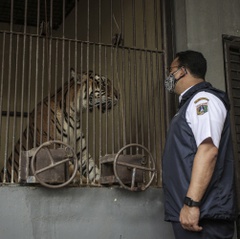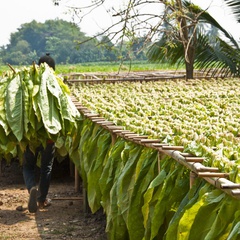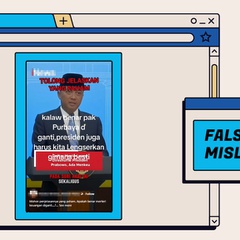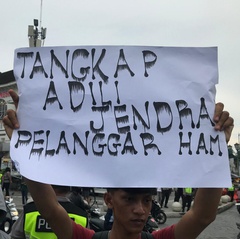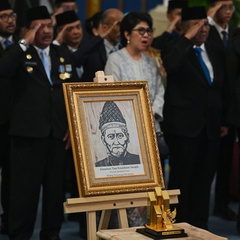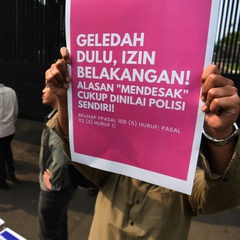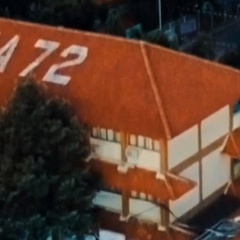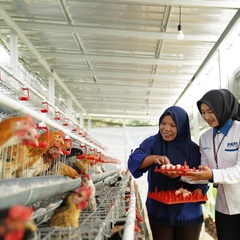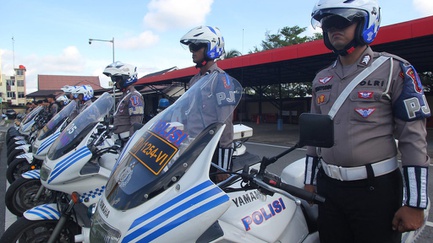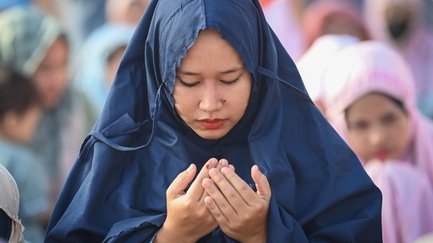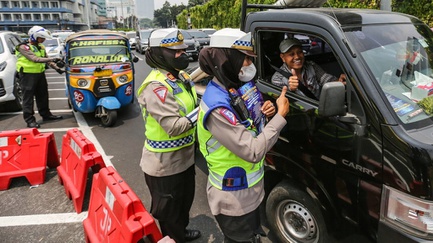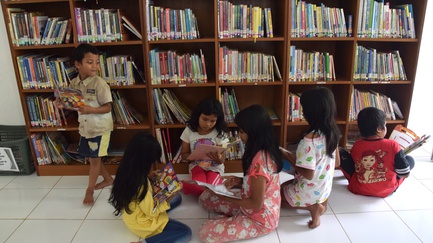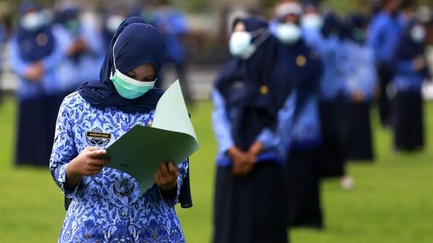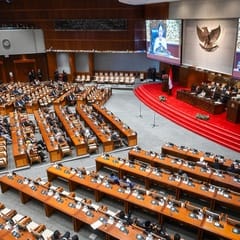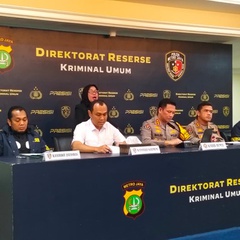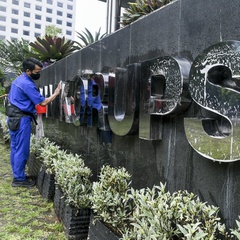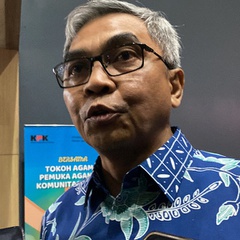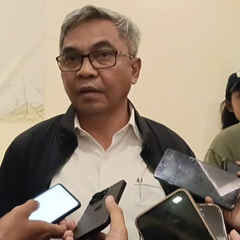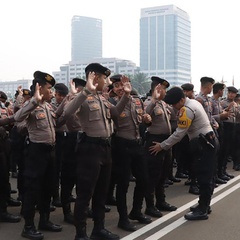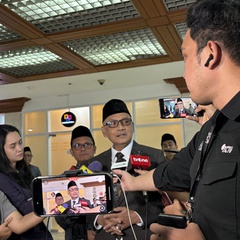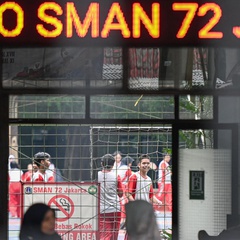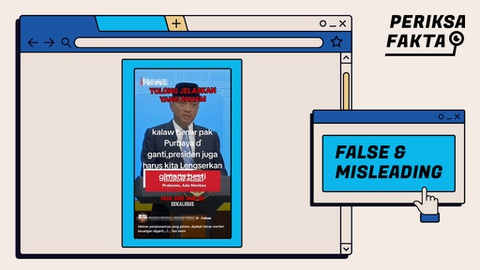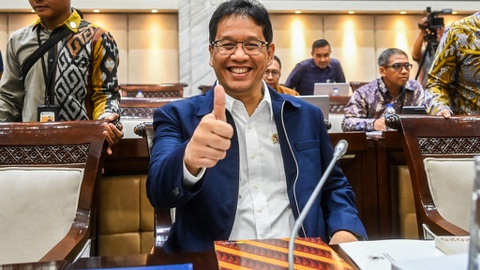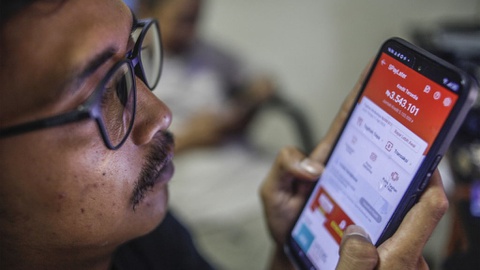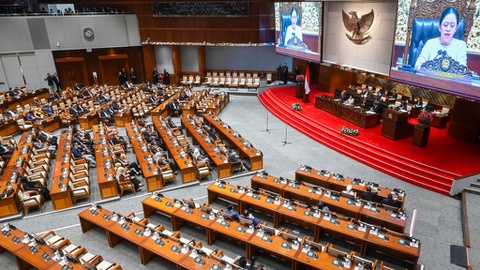tirto.id - Tes Bahasa Inggris BUMN merupakan bagian dari tahap kedua dalam Rekrutmen Bersama BUMN (RBB) 2025. Selain tes bahasa Inggris, tahap kedua juga mencakup tes learning agility BUMN.
Materi yang diujikan dalam soal bahasa Inggris BUMN mencakup tiga bagian utama. Ketiga bagian tersebut meliputi listening comprehension, structure and written expression, dan reading comprehension.
Adapun jumlah soal dalam tes Bahasa Inggris BUMN bisa berbeda tiap tahunnya. Misalnya, pada 2023 terdapat 140 soal dalam 115 menit, sedangkan 2024 sebanyak 100 soal dalam 90 menit.
55 Contoh Soal Tes Bahasa Inggris BUMN dan Jawabannya
RBB 2025 untuk jalur Reguler telah dibuka pada 7 hingga 19 Maret 2025. Peserta yang lolos seleksi administrasi akan melanjutkan ke tes tahap 1.
Jika kembali lolos, maka peserta bisa melanjutkan ke tahap 2 yang mencakup tesEnglish dan Learning Agility pada minggu ketiga bulan Mei 2025. Untuk persiapan, peserta bisa berlatih dengan contoh soal English proficiency test.
Berikut contoh soalbahasa Inggris tes BUMN dan jawabannya.
1. Thomas Paine, ____, authored Common Sense, a pamphlet linking the American colonies with the cause of liberty.
(A) whose eloquent writing
(B) an eloquent writer
(C) writer of eloquent
(D) writing eloquent
Jawaban: B
2. Natural selection refers to the process ____ evolution by favoring traits that enhance an organism’s survival.
(A) directs it
(B) of which directs it
(C) that directs
(D) to which directs
Jawaban: C
3. ____ ballet dancers practice five fundamental positions for both their arms and feet.
(A) Of every
(B) Every
(C) All
(D) All of
Jawaban: C
4. The Milky Way galaxy contains billions of stars, ____ the Sun.
(A) including
(B) includes
(C) to include
(D) which include
Jawaban: A
5. The celesta, a percussion instrument used in orchestras, looks similar to ____
(A) as a small upright piano
(B) a small upright piano is
(C) how a small upright piano
(D) a small upright piano
Jawaban: D
6. The Pacific Ocean is the largest and deepest ocean, ____ nearly one-third of the Earth's surface.
(A) covering
(B) covered
(C) cover
(D) it covers
Jawaban: A
7. Marie Curie was the first woman ____ a Nobel Prize.
(A) win
(B) to win
(C) winning
(D) won
Jawaban: B
8. The Appalachian Mountains stretch from Canada ____ the southern United States.
(A) through
(B) into
(C) to
(D) toward
Jawaban: B
9. Amanda Way’s journey as a social reformer ____ in 1851 when she advocated for a state women’s rights convention at an antislavery meeting in Indiana.
(A) began
(B) begin
(C) to have begun
(D) have begun
Jawaban: A
10. Some bryozoan colonies, small marine creatures, create ____ with extended stems.
(A) which colonies creep
(B) creeping colonies are
(C) creeping colonies
(D) colonies creep
Jawaban: C
11. Protein digestion starts in the stomach ____ finishes in the small intestine.
(A) how
(B) and
(C) while
(D) because
Jawaban: B
12. Amelia Earhart was the first woman ____ solo across the Atlantic Ocean.
(A) flying
(B) flown
(C) fly
(D) to fly
Jawaban: D
13. Unlike most birds, penguins ____ to swim rather than fly.
(A) adapt
(B) are adapted
(C) adapting
(D) adapts
Jawaban: B
14. While beavers usually don’t stay submerged for more than two minutes, they are capable of holding their breath underwater for ____ fifteen minutes.
(A) so long
(B) as long
(C) so long that
(D) as long as
Jawaban: D
15. The human heart, a powerful muscle, ____ blood throughout the body.
(A) pumps
(B) pump
(C) pumping
(D) to pump
Jawaban: A
16. Ruth Bader Ginsburg presented six women’s rights cases before the U.S. Supreme Court in the 1970s, ____
(A) winning five of them
(B) of them five winning
(C) of five winning them
(D) five winning of them
Jawaban: A
17. During photosynthesis, plants absorb carbon dioxide ____ oxygen into the atmosphere.
(A) and releasing
(B) to release
(C) and release
(D) releases
Jawaban: C
18. The Grand Canyon, one of the world’s natural wonders, ____ by millions of tourists each year.
(A) visited
(B) is visited
(C) visiting
(D) visits
Jawaban: B
19. When natural gas is burned, ____ into carbon and hydrogen atoms.
(A) broke up by hydrocarbon molecules
(B) broken up hydrocarbon molecules
(C) hydrocarbon molecules break up
(D) hydrocarbon molecules, breaking up
Jawaban: C
20. A well-balanced diet provides essential nutrients ____ the body to function properly.
(A) enable
(B) enabling
(C) that enable
(D) which enable
Jawaban: C
In Questions 21-40, identify the one underlined word or phrase that must be changed in order for the sentence to be correct.
21. The seeds (A) of the maple tree are equipped (B) with wing-like structures that allowing (C) them to be carried (D) by the wind.
Jawaban: C
22. Some of the most beautiful (A) coral reefs in the world can be found (B) in the shallow (C) waters of (D) the Arctic Ocean.
Jawaban: D
23. The cheetah, (A) the world’s fastest (B) land animal, can reach speeds up (C) to 70 miles per (D) hour in short bursts.
Jawaban: C
24. A lack (A) of calcium in (B) the diet can lead (C) to brittle bones and an increase (D) risk of fractures.
Jawaban: D
25. The Amazon rainforest (A) is home to millions (B) of species, many of who (C) have not yet been discovered (D).
Jawaban: C
26. Because the Earth’s (A) magnetic field, compasses always point (B) toward the north, (C) helping travelers navigate (D).
Jawaban: A
27. Before (A) paper was invented, ancient civilizations used (B) materials such as (C) stone, clay, and animal skins to record (D) information.
Jawaban: A
28. The human (A) brain is more complex (B) than any other organ, and it controls (C) every function in (D) the body.
Jawaban: D
29. Lightning is caused (A) by a build-up of electrical charges (B) in clouds, which are then released suddenly (C) in a form (D) of a bright flash.
Jawaban: D
30. The Great Wall of China was originally built (A) to protect the empire against (B) invaders, and it took (C) several centuries to complete it (D).
Jawaban: D
31. Many marine animals, including whales (A), must rise to the surface (B) to breathe, even they (C) spend most of their lives underwater (D).
Jawaban: C
32. The Mona Lisa, (A) one of the most famous paintings in (B) the world, is displaying (C) at the Louvre Museum in (D) Paris.
Jawaban: C
33. Astronomers (A) use powerful telescopes to observing (B) distant galaxies and study (C) the formation of stars (D).
Jawaban: B
34. Most (A) of the Earth’s fresh water is found (B) in glaciers, ice caps, and (C) underground rivers, rather than in lakes and rivers (D).
Jawaban: C
35. Modern airplanes (A) are equipped with advanced navigation (B) systems that helping (C) pilots fly safely in all conditions (D).
Jawaban: C
36. Due to (A) deforestation, many species are losing (B) their natural habitat (C), making it hard (D) for them to survive.
Jawaban: A
37. The Eiffel Tower, (A) one of the most iconic (B) landmarks in the world, were built (C) in 1889 as part of the World’s Fair (D).
Jawaban: C
38. When exercising, (A) it is important to drink (B) plenty of water to avoid (C) dehydration and keeping (D) energy levels up.
Jawaban: D
39. Some species of turtles (A) can live for over (B) a hundred years, making them one (C) of the longer-lived (D) animals.
Jawaban: D
40. The Rocky Mountains (A) stretch across (B) several states in (C) the United States, including (D) Canada.
Jawaban: D
Passage 1: The Eiffel Tower (Question 41-44)
The Eiffel Tower, one of the most famous landmarks in the world, was completed in 1889 as the entrance arch for the 1889 World's Fair in Paris. Designed by engineer Gustave Eiffel, the tower was initially criticized by many artists and intellectuals in France, who called it an eyesore. They feared that the iron structure would ruin the beauty of Paris.
Despite the criticism, the Eiffel Tower remained standing after the World's Fair and eventually became one of the most beloved monuments in France. Today, it is considered a masterpiece of engineering and attracts millions of tourists every year. The tower stands 330 meters tall and offers breathtaking views of the city. At night, it is illuminated by thousands of sparkling lights, creating a magical atmosphere.
41. What was the original purpose of the Eiffel Tower?
(A) To be a military lookout
(B) To serve as the entrance to the 1889 World's Fair
(C) To be a palace for the French king
(D) To house a famous artist
Jawaban: B
42. How did many artists and intellectuals react to the Eiffel Tower when it was first built?
(A) They immediately loved it
(B) They ignored its existence
(C) They criticized its design
(D) They used it for painting exhibitions
Jawaban: C
43. How has the Eiffel Tower’s role changed over time?
(A) It has been used only for scientific experiments
(B) It has become one of the most visited landmarks in the world
(C) It has been abandoned and closed to the public
(D) It has been turned into a residential building
Jawaban: B
44. What happens to the Eiffel Tower at night?
(A) It disappears from view
(B) It is covered with a protective layer
(C) It is illuminated with thousands of lights
(D) It closes permanently
Jawaban: C
Passage 2: The Amazon Rainforest (Question 45-
The Amazon Rainforest, often called the "lungs of the Earth," covers more than 5.5 million square kilometers and is the largest tropical rainforest in the world. It is home to a vast number of plant and animal species, many of which are found nowhere else. The rainforest plays a crucial role in regulating the Earth's climate by absorbing carbon dioxide and producing oxygen.
Unfortunately, human activities such as logging, agriculture, and urban expansion have led to large-scale deforestation. Each year, thousands of square kilometers of the forest are destroyed, reducing biodiversity and contributing to climate change. Conservation efforts are being made to protect this valuable ecosystem, but they require global cooperation and long-term commitment.
45. Why is the Amazon Rainforest called the "lungs of the Earth"?
(A) It provides shelter for endangered species
(B) It produces a large amount of oxygen
(C) It is the largest forest in the world
(D) It has clean and fresh air
Jawaban: B
46. What is a major threat to the Amazon Rainforest?
(A) Melting glaciers
(B) Oil spills in the ocean
(C) Deforestation due to human activities
(D) A decrease in global temperatures
Jawaban: C
47. What can be inferred about conservation efforts for the Amazon Rainforest?
(A) They are not necessary because the forest is self-sustaining
(B) They require global cooperation to be successful
(C) They have already completely stopped deforestation
(D) They are only supported by scientists
Jawaban: B
48. What is one consequence of deforestation in the Amazon?
(A) An increase in global biodiversity
(B) A reduction in oxygen production
(C) An improvement in air quality
(D) A decrease in tourism
Jawaban: B
Passage 3: The Wright Brothers and the First Flight (Question 49-52)
Orville and Wilbur Wright were two American brothers who changed history by inventing and successfully flying the first powered airplane. They had always been fascinated by flight and spent years studying aerodynamics. They built and tested various gliders before designing their first airplane, the Wright Flyer.
On December 17, 1903, in Kitty Hawk, North Carolina, Orville Wright piloted the Wright Flyer for 12 seconds, covering a distance of 36 meters. Although the flight was short, it proved that powered, controlled flight was possible. Over the next few years, the Wright brothers improved their designs, and their invention paved the way for modern aviation.
Today, airplanes are essential for transportation, allowing people to travel across the world in just a few hours. Without the Wright brothers' dedication and ingenuity, air travel as we know it might not exist.
49. What was the significance of December 17, 1903?
(A) The Wright brothers built their first bicycle
(B) The Wright Flyer completed its first powered flight
(C) The first rocket was launched into space
(D) The first train was invented
Jawaban: B
50. Why is the Wright brothers’ achievement important?
(A) It made bicycles more popular
(B) It allowed for the creation of modern air travel
(C) It improved the speed of cars
(D) It helped people build stronger bridges
Jawaban: B
51. Where did the Wright brothers’ first successful flight take place?
(A) New York City
(B) Kitty Hawk, North Carolina
(C) Los Angeles, California
(D) Chicago, Illinois
Jawaban: B
52. How did the Wright brothers prepare before building their first airplane?
(A) They studied aerodynamics and tested gliders
(B) They traveled around the world by ship
(C) They worked in a car manufacturing company
(D) They built their own airport
Jawaban: A
Passage 4: Marie Curie and Radioactivity (Question 53-55)
Marie Curie was one of the most influential scientists in history. Born in Poland in 1867, she moved to France to continue her education in physics and chemistry. Along with her husband, Pierre Curie, she discovered two new elements, polonium and radium, which played a key role in the study of radioactivity.
Marie Curie was the first woman to win a Nobel Prize and remains the only person to have won Nobel Prizes in two different scientific fields—Physics and Chemistry. Her research on radioactive materials led to the development of medical treatments, particularly for cancer.
Despite her remarkable achievements, Curie faced many challenges as a female scientist in a male-dominated field. However, her dedication and passion for science helped her break barriers and inspire generations of researchers.
53. What were the two elements discovered by Marie Curie?
(A) Oxygen and hydrogen
(B) Polonium and radium
(C) Carbon and iron
(D) Gold and silver
Jawaban: B
54. Why is Marie Curie unique among Nobel Prize winners?
(A) She was the first scientist to win a Nobel Prize
(B) She won two Nobel Prizes in different scientific fields
(C) She won the most Nobel Prizes in history
(D) She was the youngest Nobel Prize winner
Jawaban: B
55. What was one major contribution of Marie Curie’s research?
(A) The invention of the light bulb
(B) The development of treatments for cancer
(C) The creation of the steam engine
(D) The discovery of the airplane
Jawaban: B
Contoh Soal Tes Bahasa Inggris BUMN dan Jawabannya PDF
Adapun soal tes bahasa Inggris BUMN PDF lainnya dapat diunduh melalui link berikut ini.
Penulis: Tifa Fauziah
Editor: Yonada Nancy
Penyelaras: Nisa Hayyu Rahmia
 Masuk tirto.id
Masuk tirto.id
